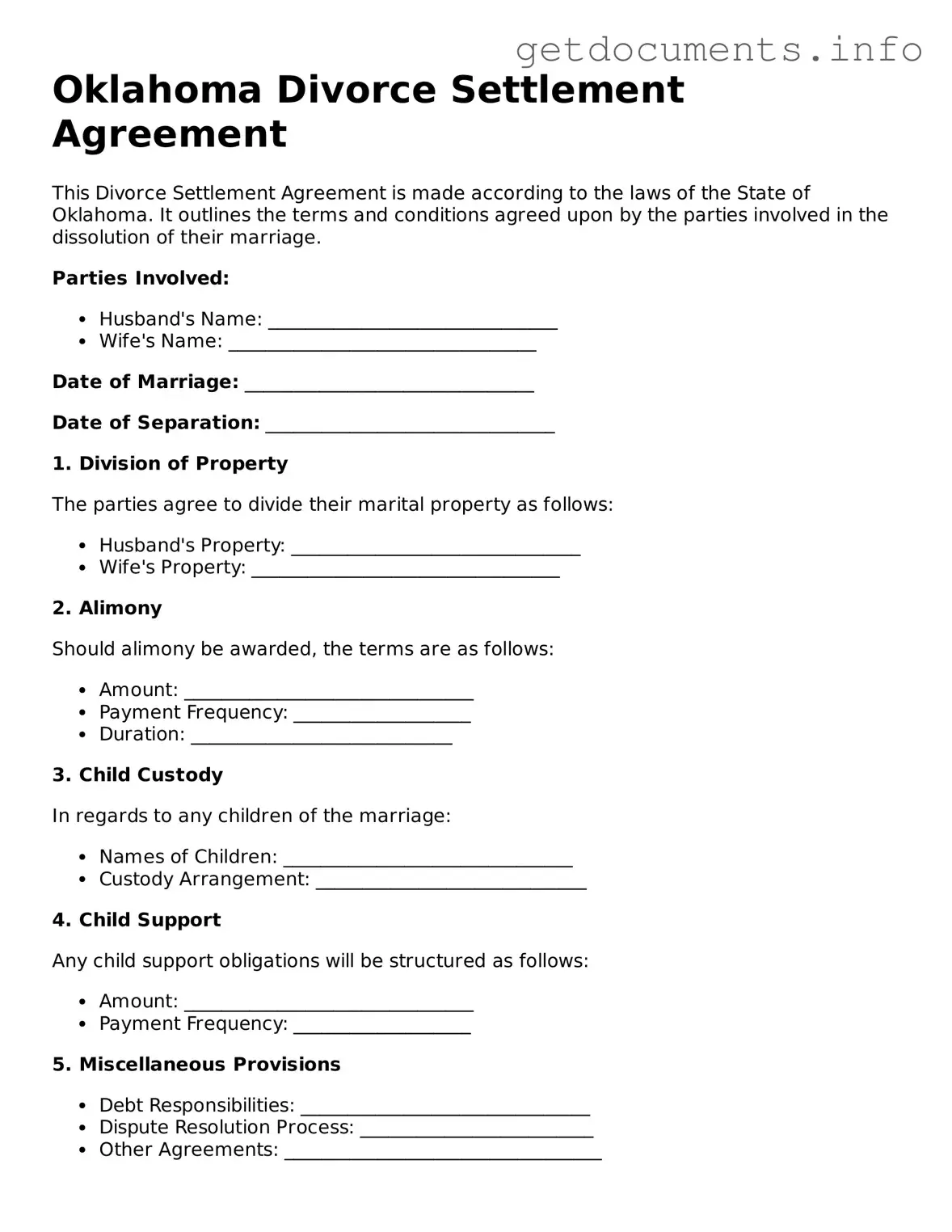Free Divorce Settlement Agreement Template for Oklahoma
The Oklahoma Divorce Settlement Agreement form is a crucial document that outlines the terms of a divorce, including asset division, child custody, and support arrangements. This form serves as a mutual agreement between both parties, ensuring that all aspects of the divorce are addressed fairly. Understanding how to complete this form can simplify the divorce process and help you move forward.
Ready to take the next step? Fill out the form by clicking the button below.
Access Divorce Settlement Agreement Editor
